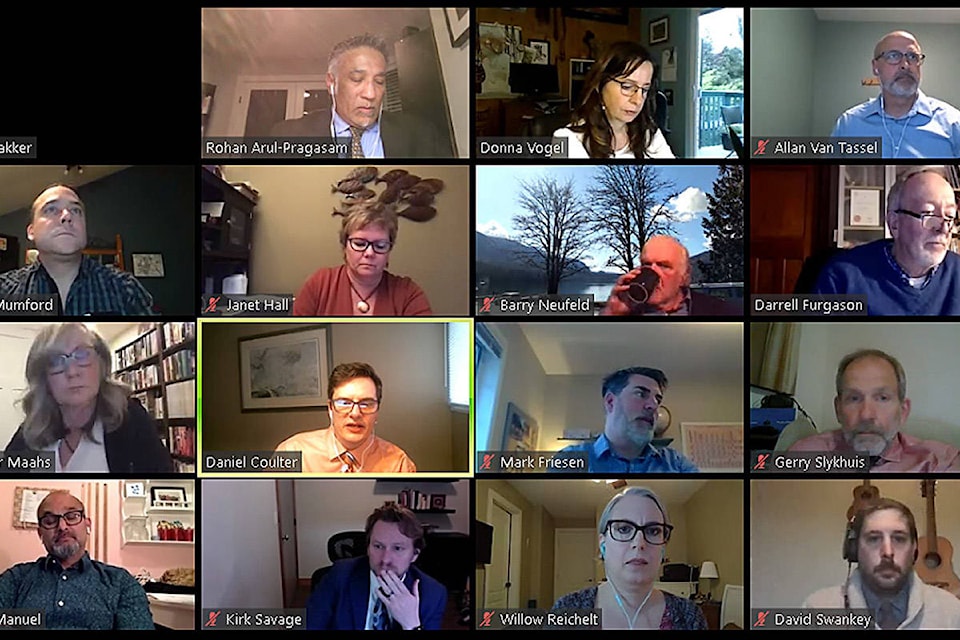Video conference calls have become a new normal in the workplace, to allow for physical distancing.
But too much of anything can come with problems, and so-called “Zoom fatigue” is an issue for many in the work force.
People aren’t just using video calls for work. There are also more people joining online in this way for celebrations, webinars, book club meetings, medical appointments, public board meetings, choir practice and so on. In addition to the popular Zoom platform, there are similar applications such as Google Hangouts, Skype and Facetime.
Chilliwack Healthier Communities has researched the issue and created a helpful list to combat this specific type of fatigue, based on several news articles, including a feature in National Geographic.
They suggest the following:
• Change to phone meetings when possible and consider walking while you talk
• Schedule breaks between Zoom meetings and remove yourself from screens
• Consider times when video cameras could be optional for meeting participants
• Choose “remove self view” from the viewing platform
• Consider using “speaker view” instead of “gallery view” for some of the time
• Use the chat option to respond instead of giving verbal or visual cues
• When possible, take time for personal check-ins at the start of meetings
• when working from home, create buffers between work and personal meetings
READ MORE:
READ MORE:
jpeters@theprogress.com
Like us on and follow us on .
Want to support local journalism during the pandemic? Make a donation



